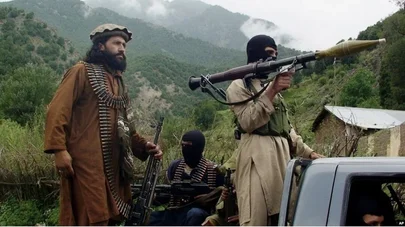For the war-torn Afghanistan, acute food shortage is the next key challenge. The land-locked country, which is now in control of the Taliban, is in the grip of a severe drought. Not just that. It has been hit by the crises right after the Covid pandemic.
According to the UN World Food Programme, 14 million people in Afghanistan – 35 per cent of the total population — are food insecure. The worst impacted are the children.
“Millions of Afghans are struggling to put food on the table as prolonged drought disrupts supplies in a country reeling from a surge in violence as US-led foreign troops complete their withdrawal,” a Reuters report said.
After the 2018 drought that caused serious damages in Afghanistan, the agriculture sector was gradually coming to life.
Also read: 80% of 500,000 displaced persons in Afghanistan are women & kids, says UN Refugee Agency
An analyst told India Narrative that the Taliban would have to ensure that food supply is maintained. “The Taliban would need to build acceptability among the locals and for that providing food will be the topmost priority,” he said.
Though wheat, one of the primary crops grown there, takes up about 2.7 million hectares annually, a lot is imported too. The main wheat growing provinces include Badghis, Takhar, Heart, Balkh, Kunduz, Helmand, and Kandahar. Besides, the country has also been cultivating high quality fruits, nuts and saffron. However, less than 20 per cent of overall Afghanistan’s land is arable.
According to Climate Home News, the country’s climate change is expected to bring more frequent and intense extreme events, such as droughts and flash flooding. This may lead to boosting the drug economy “as opium poppies flourish in warm, dry climates.”
While the US and other doner countries have built irrigation facilities in the country, many of them have not been maintained. India has also been the forefront in rebuilding the country. But take the example of the New Delhi assisted Afghan-India Friendship Dam or the Salma Dam built in east Herat. The dam, commissioned in 2016, has been damaged after the Taliban firing. Besides, reports suggested that most of staff at the site, which is one of the key sources of irrigation and electricity generation in the Herat province, have not been coming to work.
Also read: India-built Salma dam attacked by Taliban again becomes symbol of two clashing worldviews
“Now with this situation, the threat over food availability is ever more worrisome,” a person engaged with an NGO who has been living in the country told India Narrative.
While some of the best quality fruits and nuts were being grown in Afghanistan, the political turmoil along with droughts and water shortage have led to unprecedented uncertainties.
Janani Vivekananda, a senior advisor on climate change and peacebuilding at thinktank Adelphi said that ensuring water access and protecting people from severe climate impacts is critical to the governance of Afghanistan, the Climate Home News said.
“If the Taliban care about the Afghan people, they are going to have to care about water,” the news organisation quoted Oli Brown, associate fellow at Chatham House, as saying.




















